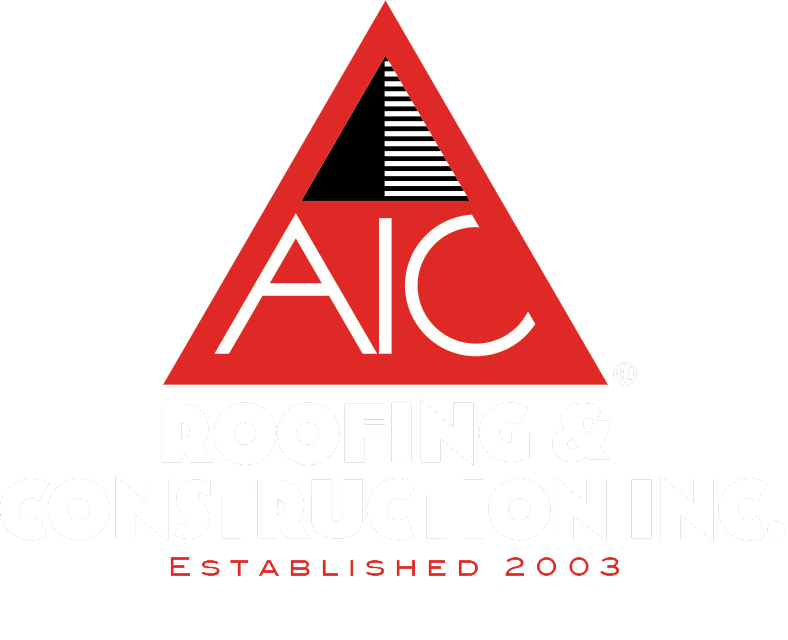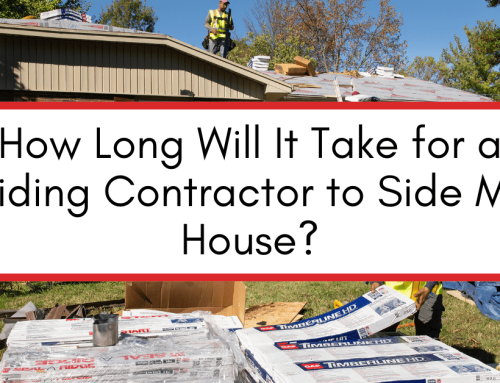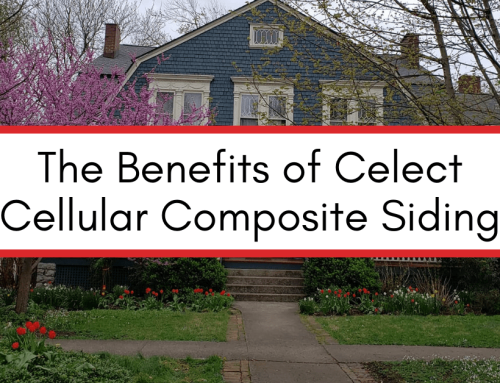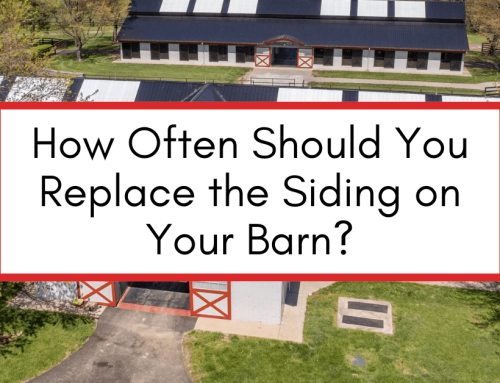Vinyl siding and Celect cellular composite siding are two popular options for homeowners looking to enhance the exterior of their homes. Choosing the right siding is an important decision that can greatly impact the aesthetics, durability, and maintenance requirements of your home.
At AIC Roofing and Construction, we want to empower homeowners to make confident decisions about their home. In this article, we will delve into the key features of both vinyl siding and Celect cellular composite siding, comparing them in terms of their composition, pros and cons, and installation costs. By the end, you’ll have a clear understanding of which siding option is the best fit for your home.
Choosing the Right Siding for Your Home
When it comes to choosing the right siding for your home, there are several factors to consider. Siding performs three important functions for your home:
1. Siding helps to insulate your home, reducing energy consumption and lowering utility bills. By providing an extra layer of insulation, siding helps to keep your home warm in the winter and cool in the summer. This can result in significant savings on heating and cooling costs over time.
2. Siding adds an extra layer of protection against various weather conditions. Whether it’s heavy rain, snow, or intense UV radiation, the right siding can help shield your home from the elements. This not only protects the structure itself but also prevents any damage to the interior of your home. By investing in high-quality siding, you can ensure that your home remains safe and secure, no matter what Mother Nature throws its way.
3. Siding is a key contributor to the curb appeal of your home. The exterior of your home is the first thing visitors and potential buyers see, so it’s important to make a good impression. The right siding can greatly enhance the aesthetic appeal of your home, giving it a fresh and updated look. This can significantly increase its resale value and make it more attractive to potential buyers.
Pros and Cons of Vinyl Siding
Vinyl siding is one of the most commonly chosen options by homeowners and builders alike. It is a cost-effective and versatile solution that offers a wide range of benefits.
When it comes to the composition of vinyl siding, it is made of a synthetic material called polyvinyl chloride (PVC). This composition gives it superior durability, strength, and resistance to weather conditions. Additionally, vinyl siding typically includes additives that help to prevent fading, warping, and cracking over time.
Vinyl siding is available in a wide range of colors and styles. Homeowners have the freedom to choose from an extensive palette of colors and various styles, allowing them to achieve their desired aesthetic. Whether they prefer a traditional look or a more modern appearance, vinyl siding offers the flexibility to match any architectural style. When comparing the cost of vinyl siding to other siding materials, vinyl tends to be one of the more affordable options.
However, it’s important to consider the drawbacks of vinyl siding as well. One common concern is that vinyl siding may crack or become brittle in extreme cold temperatures. While this is a possibility, advancements in vinyl manufacturing have led to the development of more durable and flexible options that can withstand temperature fluctuations. While vinyl siding is relatively durable, it may not be as impact resistant as other materials such as fiber cement or brick. Homeowners in areas prone to severe storms or hail might want to take this into account when choosing their siding material.
Lastly, vinyl siding, while cost-effective initially, may require replacement in the long run due to its susceptibility to damage. This should be a consideration for homeowners looking for a long-term investment.
Exploring Celect Cellular Composite Siding
Celect cellular composite siding is a relatively new product that has gained significant popularity in recent years. It offers a blend of the natural beauty of wood siding with the durability and low-maintenance benefits of a composite material. If you plan to live in your home for many years and can reap the benefits of no maintenance siding, Celect cellular composite is an excellent choice.
What is Celect Cellular Composite Siding?
Celect cellular composite siding is made from a combination of cellular PVC and wood fiber materials. This unique composition offers the look and feel of real wood, but without the associated issues such as rotting, warping, or pest infestations. Celect siding is engineered to withstand harsh weather conditions and retain its vibrant color for years to come.
Advantages and Disadvantages of Celect Siding
One of the main advantages of Celect siding is its exceptional durability. Unlike vinyl siding, Celect does not crack or become brittle in extreme temperatures. It is also resistant to moisture, ensuring that your home remains protected from leaks and water damage. Celect siding is available in a variety of colors and textures, allowing you to achieve the desired aesthetic for your home.
However, it’s important to consider the higher upfront cost of Celect cellular composite siding compared to vinyl siding. Additionally, installation may require more expertise and time due to the nature of the material. It’s crucial to work with a knowledgeable contractor to ensure proper installation and avoid any potential issues down the line.
Pricing and Installation of Celect Siding
The pricing of Celect cellular composite siding varies depending on factors such as the size of your home, the design complexity, and the contractor you choose. While Celect siding is generally more expensive than vinyl siding, it offers long-term benefits in terms of durability and low maintenance costs. The installation process may take longer due to the precision required, but the end result is a stunning and long-lasting exterior for your home.
Vinyl Siding vs Celect Cellular Composite Siding: A Direct Comparison
Now that we have explored the key features of vinyl siding and Celect cellular composite siding individually, let’s compare them side by side to help you determine which option is the best fit for your home.
Vinyl Siding vs Celect Cellular Composite Siding: Durability
In terms of durability, both vinyl siding and Celect cellular composite siding offer excellent resistance to weather conditions and pests. However, Celect siding has an advantage in extreme temperature fluctuations, as it does not crack or become brittle like vinyl siding can.
Vinyl Siding vs Celect Cellular Composite Siding: Maintenance Comparison
When it comes to maintenance requirements, Celect cellular composite siding is the clear winner. Celect cellular composite siding is virtually maintenance-free, requiring only occasional cleaning to remove dirt and debris. On the other hand, Vinyl siding may require cleaning and sealing to maintain its vibrant color and protect against the elements.
Vinyl Siding vs Celect Cellular Composite Siding: Aesthetic Comparison
Both vinyl siding and Celect cellular composite siding offer a wide range of colors and styles to choose from, allowing homeowners to achieve their desired aesthetic. However, Celect siding provides a more authentic wood-like appearance, making it a popular choice for those seeking a traditional and timeless look.
Consider All Your Siding Options
Siding can be made from a variety of materials, each with its own unique set of characteristics. Wood siding, for example, offers a classic and natural look. It is known for its durability and can be painted or stained to match your desired aesthetic. However, it requires regular maintenance to prevent rot and insect damage.
Vinyl siding, on the other hand, has become one of the most popular choices among homeowners. It is affordable, low-maintenance, and comes in a wide range of colors and styles. Vinyl siding is resistant to rot, insects, and fading, making it a durable and long-lasting option for any home.
Another popular choice is aluminum siding, which is known for its strength and durability. It is resistant to fire, rot, and insects, making it a great option for homeowners looking for a low-maintenance and long-lasting siding solution.
Fiber cement siding is a composite material made from a combination of cement, sand, and cellulose fibers. It offers the look of wood siding without the maintenance. Fiber cement siding is resistant to rot, insects, and fire, making it a popular choice for homeowners seeking a durable and low-maintenance option.
Composite siding, such as Celect cellular composite siding, is a newer option that combines the best features of various materials. It is made from a mixture of recycled wood fibers and PVC, resulting in a durable and low-maintenance siding option. Celect cellular composite siding offers the look of real wood without the drawbacks, such as rot and insect damage.
In this article, we’ll compare Celect cellular composite siding and vinyl siding. To learn more about other siding types, be sure to check out our Learning Center.
Final Thoughts
When choosing between vinyl siding and Celect cellular composite siding, it’s important to consider factors such as durability, maintenance requirements, and aesthetic preferences. We hope this article has helped you in your siding replacement journey!
Whether you’re just beginning your siding research or are ready to speak with a contractor, our Learning Center has answers about your project ranging from how long it will take to side your house to in depth comparisons and reviews.
Just as important as choosing the right siding, is choosing the right contractor. AIC Roofing & Construction has been helping homeowners since 2003. We’re proud of the best-in-class reputation we’ve earned with Central Kentucky homeowners.
If you’re ready to get a free estimate on your siding project, contact us today!
3-tab attics barns chimney choosing a contractor commercial cost curb appeal DIY estimate financing flashing flat roof GAF glossary gutter replacement gutters gutter size gutter system ice dams inspections insurance missing shingles roof design roofing materials roofing system roof leak roof maintenance roof materials roof repair roof replacement roof shapes roof types shingle ratings shingles siding siding materials siding replacement skylights storm damage underlayment ventilation warranty winter
